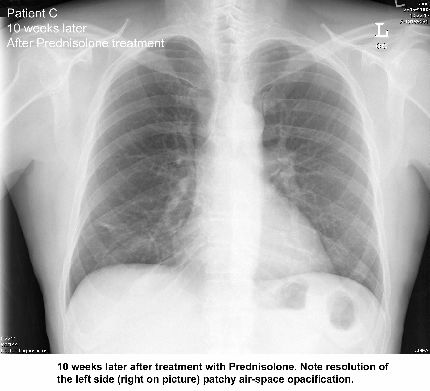Meningitis
What is meningitis? Meningitis is an inflammation of the membranes covering the brain and spinal cord
. This may be caused by a number of infectious agents, including
viruses and bacteria. The type of meningitis and its cause can only be determined by your doctor
using the results of laboratory tests. Viral meningitis (also called aseptic meningitis) is the most common type
meningitis and less serious than bacterial meningitis. In Illinois
on average 600 cases of aseptic meningitis annually, with most
occur in late summer and early autumn. In most cases of aseptic meningitis caused by viruses
called enteroviruses that can infect >> << stomach and small intestine. A small number of cases caused by different viruses
which can be transferred to an infected mosquito, called arbovirusov. Fatal cases of viral meningitis are rare and complete recovery is the rule. Bacterial meningitis is often heavier than aseptic meningitis
, especially in infants and the elderly. Before antibiotics
widely used, 70 percent or more of bacterial meningitis cases with fatal consequences, with
antibiotics, mortality decreased by 15 percent or less. Bacterial meningitis is most common in winter and spring. Three bacteria
cause most cases:
Haemophilus influenzae, Neisseria meningitidis
or pneumococcus. Haemophilus meningitis is often caused by Haemophilus
infection type B, also known as Hib. Before effective vaccines were available
and widely available, Hib was the most common cause of bacterial meningitis
children aged 5 years and younger. In Illinois, the average
230 cases annually. However, from 1985 to 1996 by 82 percent
reducing Haemophilus influenzae meningitis. Now
. averages 50 cases per year, mortality is about 5 percent. This is a >> << a significant reduction is due to the routine use of vaccines against Hib. Meningococcal meningitis caused by
Neisseria meningitidis, is primarily a disease
infants, with incidence decreasing in
those older than 1 year. The disease is most common during winter and spring
In some people, the bacteria can cause severe blood infection called
meninhokokkemiya. Illinois average of 115 cases of meningococcal disease in the year;
about 10 percent are fatal. Pneumococcal meningitis caused by pneumococcus
(pneumococcus), usually affects children, the elderly and people with
certain chronic diseases. On average 100 cases are in Illinois
year. Overall, 5 percent to 10 percent of cases lead to death, but in
persons with significant underlying disease mortality can be 20 percent of the
to 40 percent. How it spreads? Meningitis is very contagious. Both viral meningitis and bacterial meningitis >> << can spread by direct contact with nose and throat.
Healthy people who have no signs of the disease may have the bacteria
in the nose or throat, and distribute them to others. Share a glass
cup or eating utensils, coughing or sneezing in the face of another person, or
sharing cigarettes are examples of how contact with alien
respiratory secretions may occur. Viral meningitis can be transmitted fecal pollution (
. except respiratory), when the infected person or canopies highlights
virus in his / her chair. What are the symptoms of meningitis? Meningitis can produce mild symptoms such as headache, low-grade fever and fatigue
takes two to three days in some patients. In other >> << patients, symptoms can be severe and begin suddenly with fever, headache
and stiff neck accompanied by some combination of other symptoms: loss
appetite, nausea, vomiting, sensitivity to bright light, confusion and sleepiness
In newborns and infants, the classic results of fever, headache and stiff neck >> << may or may not be present. A child may be no symptoms other than being
sluggish, irritable and sleepy, not having sufficient interest in nursing and possibly
vomiting. Purple-red rash may appear with meningococcal meningitis. As meningitis diagnosed? Cerebrospinal fluid can be tested to determine the type of meningitis
causing symptoms. This definition is an important factor in choosing an effective antibiotic for treatment >> << bacterial meningitis. As meningitis treated? Treatment of individuals with viral (or aseptic) meningitis is usually
is to reduce fever and making sure they take plenty of fluids. All >> << three forms of bacterial meningitis, however, require immediate medical attention >> << doctor and can be treated with some antibiotics. Appropriate antibiotic treatment of most common types of bacterial meningitis >> << to reduce mortality by about 10 percent, while
mortality is higher in children, the elderly and persons with certain concomitant diseases >> << . How to prevent meningitis? Transmission of viral and bacterial meningitis can be prevented by
improve care among persons at risk of infection among those >> << that could spread disease. Of paramount importance is the proper hand washing techniques
. Wet your hands with soap and warm water. Rub hands for 10 to 20 seconds
sure you clean under the nails. Rinse under warm running water. Dry >> << hand paper towel or your own clean towel. If paper towels
possible, use paper towel to turn off the tap and throw the towel >> << away. Individuals should cover nose and mouth while sneezing or coughing and
refuse used tissues in no time. Wash your hands after contact with respiratory
, including treatment of contaminated tissues and handkerchiefs. Individuals must not share straws, cups, glasses, water bottles used during sports or recreation
, cutlery, cigarettes, etc. Eating and drinking utensils
should be general and should be used only after the other, is
washed. Confuse people kissing the child, baby or child on
mouth can also help prevent the spread of disease. Prevention of viral meningitis also requires proper hand washing to remove faeces >> << contamination after using the toilet, changing diapers, helping kids with toilet >> << and so on. For meningococcal meningitis, household and other contacts who had
close personal contact with infected people recommended to receive prophylactic antibiotics
often rifampicin, which kills the bacteria that live in the nose and secrets
throat. To contact specific case
Haemophilus influenza meningitis, rifampicin and may be recommended. The disease rarely
is in close contact with
, pneumococcus meningitis. C >> << recommends the use of rifampicin and other prophylactic antibiotics differ
depending on the particular situation, it is best to consult a doctor or
local health department for recommendations. Even purchase strattera if rifampicin or other >> << prophylactic antibiotics taken, close contacts should be observed for any >> << symptoms and should be immediately evaluated by a doctor if symptoms. American Academy of Pediatrics and the Advisory Committee on Immunization Practices
and recommend vaccination against Hib-infection for all infants << >> starting from 2-month old. Neisseria meningitidis can attack people << >> in any age, but is relatively rare in the United States. Meningococcal vaccine << >> usually recommended only for people who travel to other countries >> << where the epidemic is in progress for recruits and, rarely, in other circumstances >>. << Vaccine pneumococcal infection is recommended for certain << >> children and adults with chronic disease or referred for << >> persons aged 65 and older. . << >>





